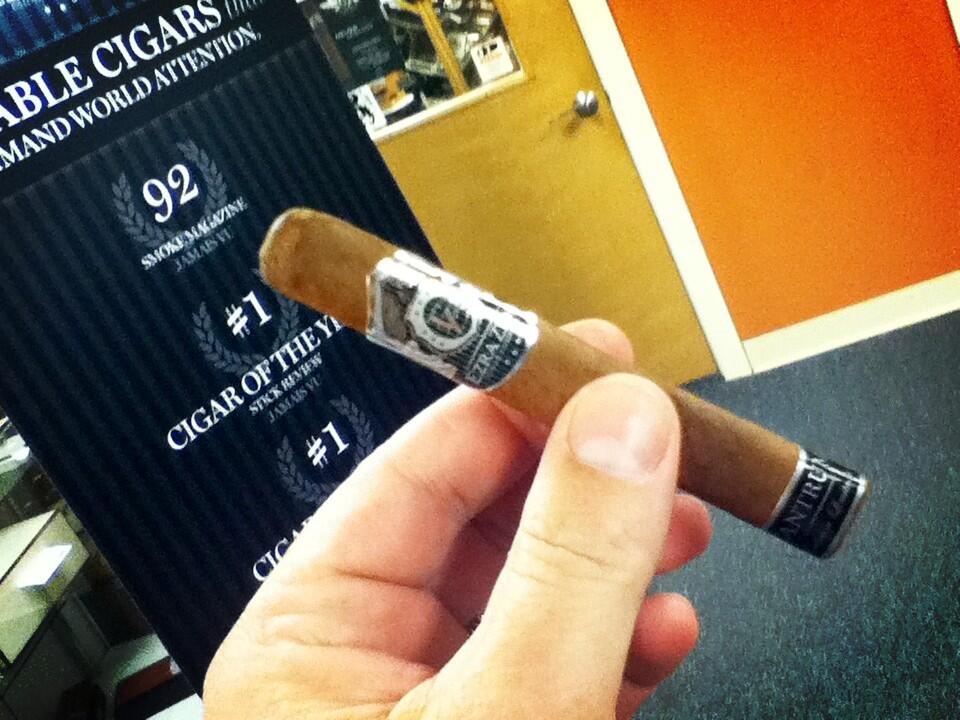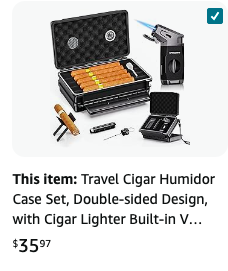After visiting the Oliva Tobacco operations, we returned to the Drew Estate compound for a delicious lunch. The food is always great on the Cigar Safari, no need to worry about going hungry. I’ve evolved over the years, instead of having a cigar in my hand the entire time, I’ve begun waiting until down time to enjoy a smok
e. There just seems to be too much to take in on these tours to be concerned with a cigar, and I’m juggling cameras as well. I’ve lost track of what I smoked when, but all the cigars smoked there were good! More on that later…
 Since Will Cooper (cigar-coop.com) recently posted an excellent article on the Joya de Nicaragua factory history, direction and the presentation that we were given, in today’s installment I’ll focus on an exercise administered by José Blanco, a gentleman who is a legend in the industry and whom we had the great privilege to spend quite a bit of time with on this trip. In the past we took part in a blending session consisting of wrapper, binder and filler tobaccos from the Esteli, Condega and Jalapa tobacco growing regions of Nicaragua. I must say that I still enjoy the cigars I blended at Joya de Nicaragua on my last visit in March of 2011, I have 2 left. Since we had all done that before, José Blanco and the group there decided that we should do something different. We were given an exercise. We would be given three little cigars that Jose called “Grado Puro”, which were made entirely of one leaf variety, binder, wrapper and filler. These were different than the fumas style cigars I’ve had in the past for tasting tobaccos in that they were very nicely rolled little petit coronas. We were tasked with trying to determine the country of origin, the priming (Seco, Viso or Ligero) and list what we liked and disliked about each variety. Of course, this was a disaster for me, as well as many of my media compadres. I was fairly adept at mis-identifying each tobacco, and I probably didn’t even get my likes and dislikes right! I don’t think any of us expected one of the puros to be Peruvian tobacco! I had a Peruvian puro not too long ago and I missed that completely. After we fried our palates on the Grado Puros, we were asked to evaluate a 6″ x 60 unbanded cigar that we assumed may be a new offering, fully appreciating the folly of trying to taste anything at that point in the afternoon! Many bailed after the first inch or two, but I stuck with it for a while and while it started out a little slow, it built into a nice tasting smoke by the middle. I’ll be interested to see what this was, I suspect it was NOT a Nicaraguan puro, but what do I know?
Since Will Cooper (cigar-coop.com) recently posted an excellent article on the Joya de Nicaragua factory history, direction and the presentation that we were given, in today’s installment I’ll focus on an exercise administered by José Blanco, a gentleman who is a legend in the industry and whom we had the great privilege to spend quite a bit of time with on this trip. In the past we took part in a blending session consisting of wrapper, binder and filler tobaccos from the Esteli, Condega and Jalapa tobacco growing regions of Nicaragua. I must say that I still enjoy the cigars I blended at Joya de Nicaragua on my last visit in March of 2011, I have 2 left. Since we had all done that before, José Blanco and the group there decided that we should do something different. We were given an exercise. We would be given three little cigars that Jose called “Grado Puro”, which were made entirely of one leaf variety, binder, wrapper and filler. These were different than the fumas style cigars I’ve had in the past for tasting tobaccos in that they were very nicely rolled little petit coronas. We were tasked with trying to determine the country of origin, the priming (Seco, Viso or Ligero) and list what we liked and disliked about each variety. Of course, this was a disaster for me, as well as many of my media compadres. I was fairly adept at mis-identifying each tobacco, and I probably didn’t even get my likes and dislikes right! I don’t think any of us expected one of the puros to be Peruvian tobacco! I had a Peruvian puro not too long ago and I missed that completely. After we fried our palates on the Grado Puros, we were asked to evaluate a 6″ x 60 unbanded cigar that we assumed may be a new offering, fully appreciating the folly of trying to taste anything at that point in the afternoon! Many bailed after the first inch or two, but I stuck with it for a while and while it started out a little slow, it built into a nice tasting smoke by the middle. I’ll be interested to see what this was, I suspect it was NOT a Nicaraguan puro, but what do I know?
Here is a slideshow of some photos
I took while we were there:
You can see in the above before and after pictures the dramatic difference that they’ve made! Thank you to everyone at Joya de Nicaragua for rolling out the red carpet to us last week. I never tire of visiting your lovely factory!
Contest!
What the heck, I have some extra goodies laying around here that are relevant to the subject matter described herein, so let’s give stuff away! I have two 5-packs of My Uzi Weighs a Ton Baitfish, I MUWAT trucker cap, an Acid Bulletproof cutter, and some assorted surprise odds and ends I’ll scare up! I’m going to make you work this time. While I was at Cigar Safari I saved all of the bands from the cigars I smoked. Some were regular production, some had factory ID bands, but I have them here, and I need you to guess how many I have. The winner is whoever guesses correctly, or is closest by Sunday, May 12, 2013. Ties will be decided by the timestamp on the comment, so pay attention! Good luck, it may not be as easy as it sounds!
Here’s Will Cooper’s video of the presentation I mentioned earlier. Thanks, Will, for saving me the trouble of editing mine!
That’s all for today, until the next time,
CigarCraig








 which is a 4.44″ x 44 petite corona that they were referring to as a fire cracker. Obviously my tastebuds are still compromised from my experiences earlier in the week, because I found it to be a well balanced, full flavored little smoke, but I didn’t really get the strength. Like I said, I had a busy cigar week, your mileage may vary. If you get a chance to try any of the Ezra Zion offerings, loosen the purse strings and give them a try. They are pricey but worth it, and cheap SOB CigarCraig don’t say that about many cigars! I always enjoy seeing my many cigar friends and it was a great pleasure to finally meet Fred. Cigar people are so much fun!
which is a 4.44″ x 44 petite corona that they were referring to as a fire cracker. Obviously my tastebuds are still compromised from my experiences earlier in the week, because I found it to be a well balanced, full flavored little smoke, but I didn’t really get the strength. Like I said, I had a busy cigar week, your mileage may vary. If you get a chance to try any of the Ezra Zion offerings, loosen the purse strings and give them a try. They are pricey but worth it, and cheap SOB CigarCraig don’t say that about many cigars! I always enjoy seeing my many cigar friends and it was a great pleasure to finally meet Fred. Cigar people are so much fun!




























